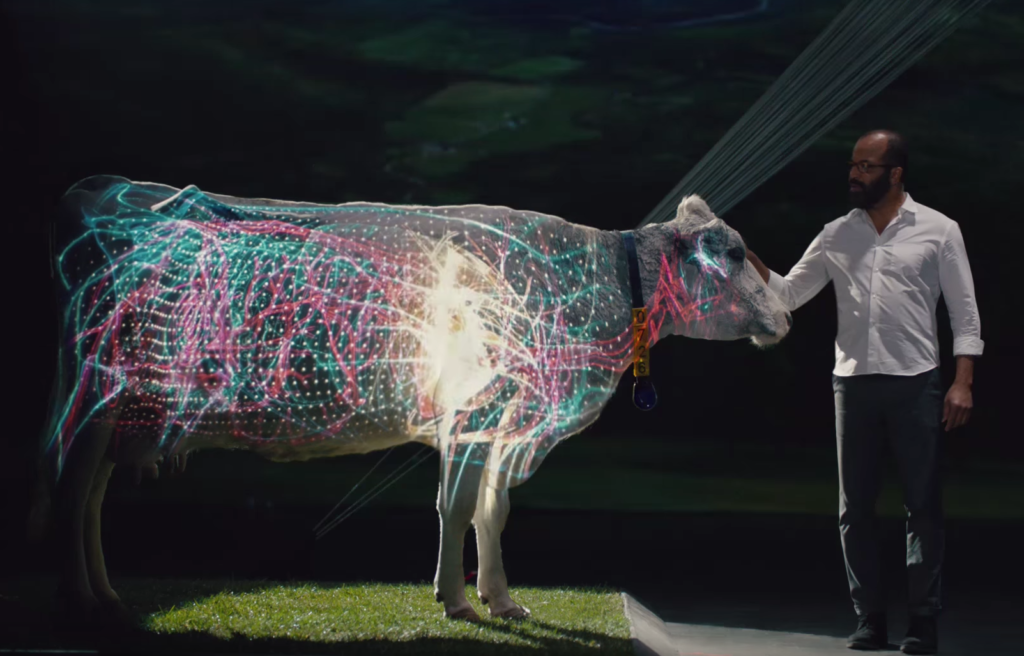When Dell closed a $67 billion merger with EMC last September, it made history by becoming the largest merger in tech history.
In addition to becoming the world’s largest privately controlled tech company, Dell also rebranded into Dell Technologies, a company with seven different subsidiaries aligning allegiances with their PC and hardware brands, which include Dell, Dell EMC, Pivotal, RSA, Virtustream, VMware and SecureWorks.
With a new corporate direction from the edge to the core to the cloud in providing infrastructure for organizations to building their digital future, transforming IT and protecting assets, naturally, Dell Technologies has a new brand message to move across the 180 countries they service.
The company has pegged Westworld actor Jeffrey Wright to play as spokesman in a series of spots that blurs the lines between science and magic and emphasizes the corporation’s clout in computing.
The integrated campaign introduces the brand through cross-screen video and advertising across TV, out-of-home, mobile, desktop, pre-roll and social as well as sponsorship of last week’s Dell Technologies Match Play, and a podcast series with Walter Isaacson. It’s complemented with a new experience on their website where they’re building thought leadership through multimedia content and storytelling that isn’t necessarily about their products, or what they sell, but more about consumers and the challenges they face—and how Dell Technologies is serving up real solutions to their problems.
Liz Matthews, senior vice president of global brand and creative at Dell Technologies, joined [a]listdaily to explain how their campaign is educating consumers, brands and agencies about their new brand ethos.

What is the strategy for Dell Technologies to re-establish the brand in the marketplace?
The launch of the new awareness campaign for Dell Technologies is about making that connection to its family of brands. We definitely want to keep our momentum going with our consumers, gamers and small business clients, but also tell a holistic story from what we can do from consumer to large enterprise, and how we can serve and tee up the device from data all the way up to cloud. So it’s really much more of an end-to-end story introducing the umbrella of brands.
What are the consumer pain points you are trying to solve along in the process?
It’s interesting, because the pain points of consumers and businesspeople are blurring. People want devices that they can engage and play on, but then, they also do a lot of work on it, too. For example, the challenge that people have on protecting their data and security and making sure that their data lives in a cloud somewhere, and they can get it all back—it’s the same for consumers and businesses. That’s going to be a huge focus for us this next year, and how we can solve those problems holistically and really set the stage for amazing and innovative devices.
How are you approaching the marketing of this new strategy?
From a marketing standpoint and strategy, it is absolutely a content-first one. We are starting with that. We have a huge, huge focus on content. As we really started talking to our customers, we understood that transforming businesses and industries is a huge undertaking. It’s not easy. We know that technology makes the world a little more magical, but it’s not magic that makes that transformation happen. We really want to pull back the curtain and make digital transformation real.
Has your branded content approach been successful?
It has. In fact, we’re launching a new podcast series with author Walter Isaacson as one of our hosts to talk about business and industry transformation. It’s really about storytelling. There are no ads in it, and there’s only a slight mention of Dell Technologies. We want people to learn and engage through storytelling—and branded content is a big piece of that, both from the original branded content that we are creating, and the ones where we are partnering with publishers to do it in a native format. … We also create engaging content from an AR and VR perspective that enables people to be entertained, but also how we’re using it with businesses for real practical applications. We look at everything now from the lens of ‘how do we create an experience?’ We partnered with brands who use AR and VR in their marketing, like Jaguar and Landrover for their I-PACE concept car, and were able to supply the technology and partner from a content perspective, too.
Why are brands serving as storytellers so critical, and how do does Dell Technologies plan on evolving its message?
We’re going to continue to think about customers with interactive and multimedia to show how technology enables people to transform and move human progress forward. We don’t want to deviate from that story. Obviously, we still need to sell products, and we’ll continue to do that. But we wholeheartedly feel that the brand has a human aspect—and that aspect is our consumer. There are people behind every move we make, and those are the stories that interest us.
How are you using influencer marketing to amplify your content, and message?
We find influencers to be a huge piece of our marketing mix. Actor Adrian Grenier has been a huge and incredible influencer for us who is aligned to our purpose, and why we exist. It’s about leaving a legacy of good and being able to match our priorities with his priorities, and actually uniting and creating things together that both of us are passionate about. He’s probably the most authentic influencer that we have. In our small business and consumer lines, we absolutely have a number of different influencers like YouTube creators to small business mavens to entrepreneurs that we partner with to tell their story. You’ll see that theme of storytelling a lot. We want to tell the story of our consumers.
How did you introduce the new brand at SXSW earlier this month? How did you measure success?
What we wanted to do in Austin was create experiences in an environment that highlights the best of the best of which we have to offer with our devices by bringing in different elements of our company that still touch and impact consumers. It was the first time we were an official venue at SXSW; it was a place where they can actually touch the products, and play with them, and bring experiences to unexpected places. That included augmented and virtual reality, Dell Canvas, but also have conversations that span the whole portfolio, like panels on the role of security and building a culture around open source for collaboration, and how it’s transforming how we innovate. We measured success by the overall sentiment in the marketplace, and how people were feeling and talking about the brand, and if we were moving the needle. We measured by the trend of our perception. A lot of people know Dell. We want people to know Dell as ‘the new Dell.’ Innovative. Cutting edge. Consumer focused.
Follow Manouk Akopyan on Twitter @Manouk_Akopyan
https://www.youtube.com/playlist?list=PLmbFlhPb2qyVVT0RkXr6Zv0RfKbBJhm0I

